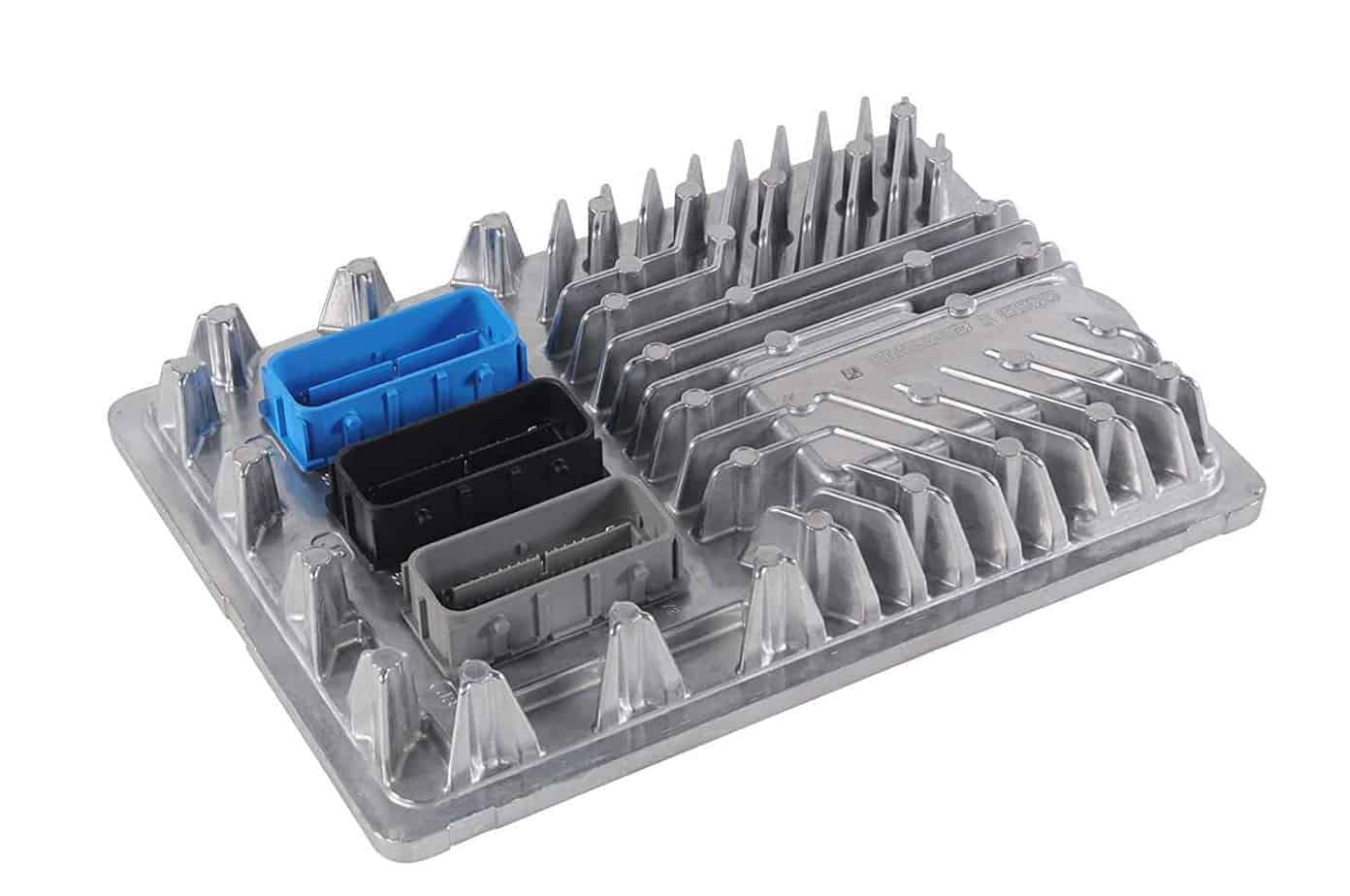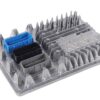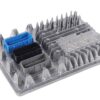Is Your GM Truck or SUV Experiencing Frustrating Engine Problems?
If you’re dealing with a persistent Check Engine Light, poor fuel economy, erratic engine behavior, or even a no-start condition in your 2016-2018 GM vehicle, a failing Engine Control Module (ECM) is a very likely culprit. The ECM is the central computer of your vehicle, responsible for managing everything from fuel injection and ignition timing to transmission shifting and emissions control. When it begins to fail, it can cause a cascade of confusing and difficult-to-diagnose issues that can leave you stranded and facing expensive diagnostic bills.
We had a 2017 Sierra 1500 come into the shop that was driving the owner crazy. It would randomly stall at stoplights, and sometimes it wouldn’t start at all for 10-15 minutes. He’d already replaced the battery and alternator, but the problem persisted. We scanned the vehicle and found a handful of intermittent communication codes pointing towards the ECM. After confirming power and ground to the module were solid, we knew the internal circuitry was failing. Instead of a costly trip to the dealer, we installed one of our VIN-programmed ECMs. After performing the security relearn, the truck fired up instantly and ran perfectly. It’s a common story, and a pre-programmed module is the most efficient and reliable fix.
Common Symptoms of a Failing GM Engine Computer
- ✔ Persistent Check Engine Light (CEL) with various trouble codes.
- ✔ Vehicle refuses to start or has difficulty starting.
- ✔ Poor engine performance, including misfires, hesitation, or stalling.
- ✔ Noticeable decrease in fuel efficiency.
- ✔ Harsh or erratic automatic transmission shifting.
- ✔ Communication errors with diagnostic scan tools.
- ✔ Issues with other electronic modules due to network communication loss.
The Direct-Fit Solution: A VIN-Programmed ECM
Don’t settle for a generic, unprogrammed module that requires expensive dealer-level tools and subscriptions to make it work. This Engine Control Module is the definitive solution for your vehicle. We take the guesswork and hassle out of the repair by pre-programming the unit specifically for your truck or SUV using your Vehicle Identification Number (VIN). This process ensures that the module has the correct software and calibrations directly from GM, matching your vehicle’s exact configuration including engine, transmission, and emissions equipment. This is a genuine OEM component, ensuring perfect fitment and function.
This module is a direct replacement for a range of part numbers, including: 12692068, 12704476, 12686382, 12674052, 12674472, and 12678815. Simply provide your VIN after purchase, and we’ll ship a module that’s ready for the final installation steps.
Installation Guide for Your 2016-2018 Silverado 1500 ECM
While the physical installation of the ECM is straightforward—typically involving disconnecting the battery, unplugging the electrical connectors, and unbolting the old unit—there is a critical final step required for your vehicle to operate. Because this is a vital security component, a Vehicle Theft Deterrent (VTD) relearn must be performed after installation. This procedure synchronizes the new ECM with your vehicle’s existing anti-theft system and ignition keys.
IMPORTANT: This VTD relearn procedure, along with any other necessary setups like a crankshaft position variation relearn or injector flow rate programming, must be completed by the end-user. This typically requires a professional scan tool or access to GM’s programming software (such as Tis2web/Techline Connect). We provide the correctly programmed brain; the final handshake with your vehicle’s systems is the responsibility of the installer. Failure to perform these steps will result in a no-start condition.
Guaranteed Fitment For These Vehicles:
- ✔ 2017 Cadillac XTS (3.6L Twin Turbo, VIN 8)
- ✔ 2017 Chevrolet Tahoe
- ✔ 2017 Cadillac CTS (6.2L Supercharged or 3.6L Twin Turbo)
- ✔ 2017 Chevrolet Corvette
- ✔ 2016-2018 Chevrolet Silverado 1500 Pickup
- ✔ 2016-2018 GMC Sierra 1500 Pickup
- ✔ 2017-2018 GMC Sierra Denali 1500
- ✔ 2017 Chevrolet Suburban 1500
- ✔ 2017 Cadillac ATS (3.6L, VIN Y)
Please verify your original part number or consult the detailed fitment list to ensure compatibility.
Frequently Asked Questions
Why do I need to provide my VIN?
Your VIN (Vehicle Identification Number) is essential because it allows us to load the exact GM-specified software and calibrations for your truck’s unique build, including its engine, transmission, and all factory options. This ensures the ECM works perfectly right out of the box after the final relearn procedures.
What is a ‘theft relearn’ and can I do it myself?
A theft relearn, or VTD relearn, is a security procedure that syncs the new ECM to your vehicle’s immobilizer system. Without it, the vehicle will not start. While some older GM models had a manual 30-minute key-cycle procedure, most vehicles compatible with this ECM require a professional scan tool or access to GM’s official software like Tis2web/Techline Connect. It is not typically a DIY procedure without the proper equipment.
Is this a plug-and-play part?
It is ‘plug-in and program’. The physical installation is simple, and the main engine software is already programmed by us. However, the final security relearn and potentially other minor relearns (like crankshaft position) must be performed on the vehicle after installation. So, it is not fully ‘plug-and-play’.
Will this ECM fix my check engine light?
If the check engine light and associated symptoms are caused by a faulty ECM, then yes, this part will resolve the issue. However, it’s crucial to properly diagnose the vehicle first. This module will not fix problems caused by other failed components like sensors, wiring, or mechanical parts.
What happens if I install it and the truck doesn’t start?
A no-start condition after installation is almost always due to the Vehicle Theft Deterrent system not being properly relearned. You must have the VTD relearn procedure performed by a qualified technician with the appropriate tools to enable the vehicle to start and run.


